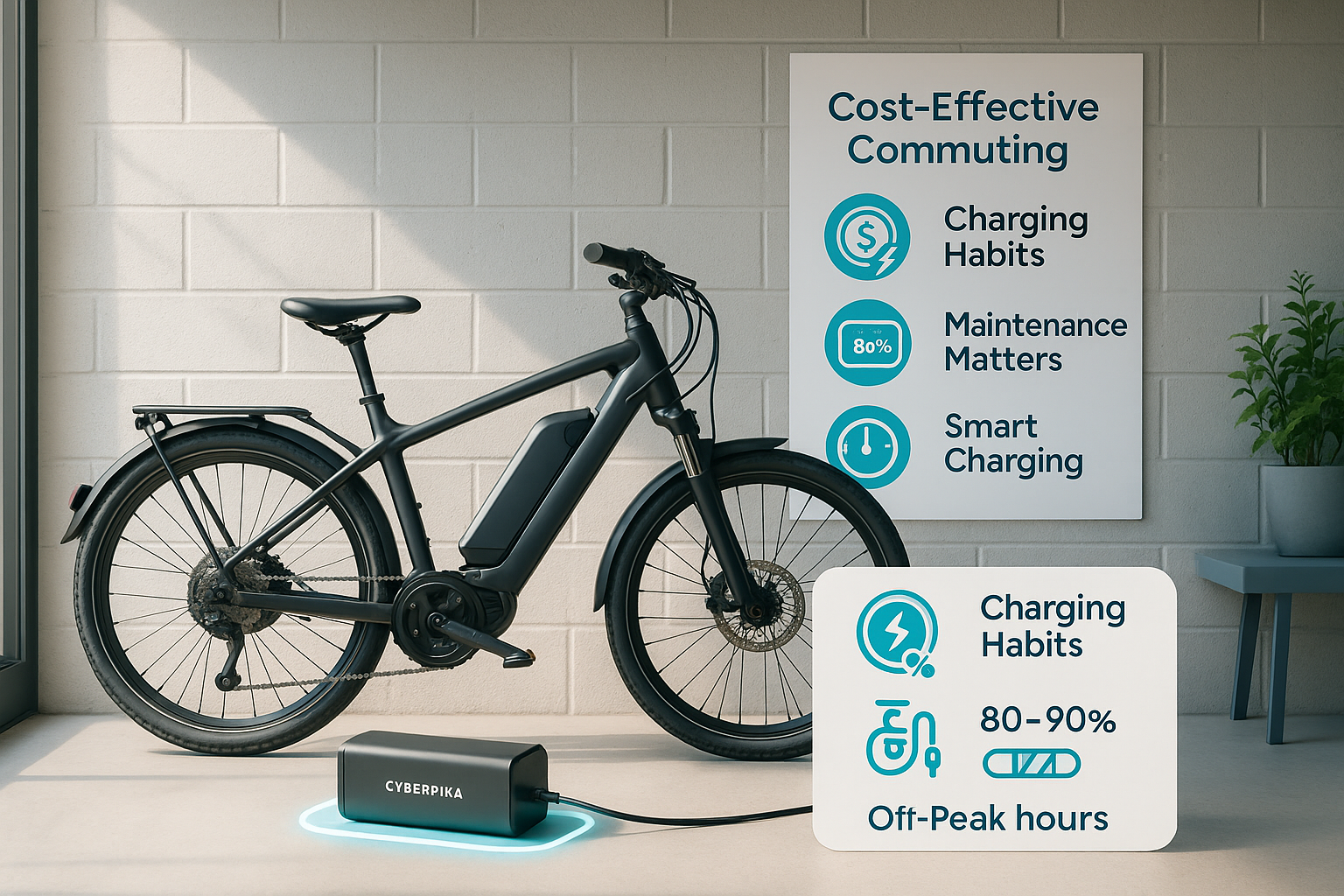E-bikes are famously inexpensive to power, but how inexpensive depends on your battery size and local electricity price. This guide shows you a simple way to estimate the true per‑charge cost, then scale it to weekly and monthly spend—so you can make informed decisions about when and how to charge.
What affects the cost
Battery capacity: Most e-bike batteries list watt-hours (Wh). Convert to kilowatt-hours: kWh = Wh ÷ 1000. A 540Wh pack is 0.54 kWh.
Electricity price: Check your utility bill or website for the “per kWh” rate (and whether you have time-of-use pricing).
Charger efficiency: No charger is 100% efficient. A good unit wastes less energy as heat, so more power reaches your battery.
Riding and environment: Heavier loads, hills, wind, low tire pressure, and cold temps may mean more frequent charges.
The quick formula
Cost per full charge ≈ (Battery kWh ÷ Charger efficiency) × Price per kWh.
Example: a 0.54 kWh battery, charger ~90% efficient, electricity $0.20/kWh → 0.54/0.90 × 0.20 ≈ $0.12 per full charge. Your numbers will vary—plug in your own kWh rate.
Daily/weekly/monthly view
Daily commuters: If you use half a battery per day, your daily cost might be a few cents.
Weekly: Multiply your “per charge” by number of times you top up. If you charge three times a week at $0.12, that’s $0.36/week.
Monthly: Four weeks of weekday commuting would be roughly $1.40–$2.00, depending on route, weather, and assist level.
How efficiency saves money
A more efficient charger turns more wall power into stored energy and runs cooler. The per‑charge difference is small, but over hundreds of cycles it adds up—especially for riders who charge daily. Efficient units also tend to have smarter end‑of‑charge behavior, which supports battery health.
Simple ways to reduce charging spend
Charge in a cool, ventilated spot. Heat increases losses and battery stress.
Keep tires properly inflated and your drivetrain clean so you need fewer top‑ups.
Don’t leave the battery sitting at 100% for days. If you won’t ride soon, stop around 80–90%.
If your utility offers off‑peak pricing, schedule charging in cheaper windows.
A note on “fast” vs. “healthy” charging
Higher current can shorten charge time, but always stay within the battery’s rated input. A good charger will limit current and taper automatically near full. For routine commuting, partial charges (e.g., 60→90%) are efficient and easy on the pack.
Bottom line
Once you run the numbers for your battery and local rate, most riders discover that e-bikes cost pennies per ride to power. Combine a reasonable electricity price with good habits and an efficient charger, and the operating cost becomes almost negligible—without sacrificing performance or range.


Share:
Top 7 Must-Have Accessories for E-Bike Owners
Smart vs. Standard Chargers: Where the Savings Come From